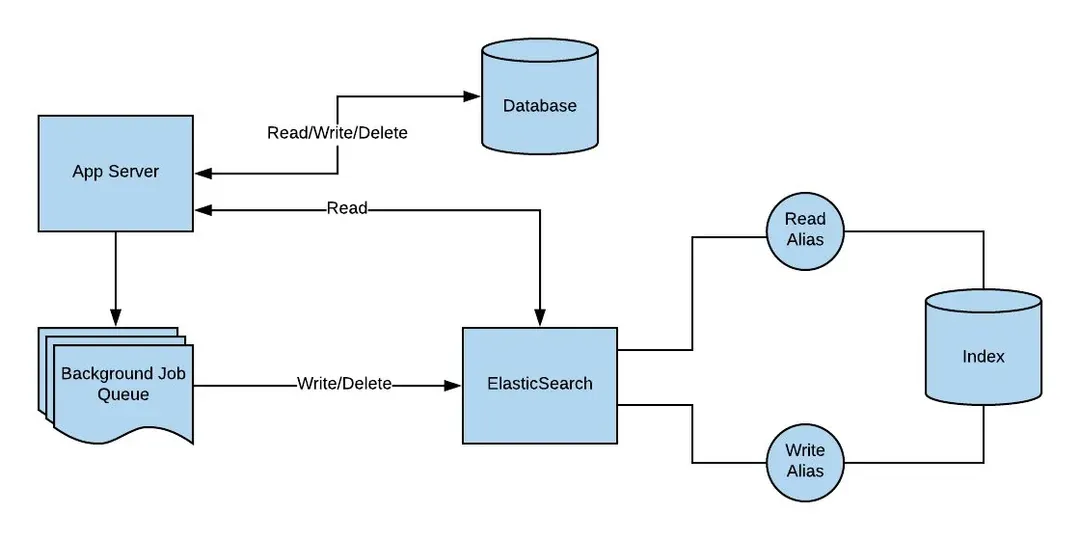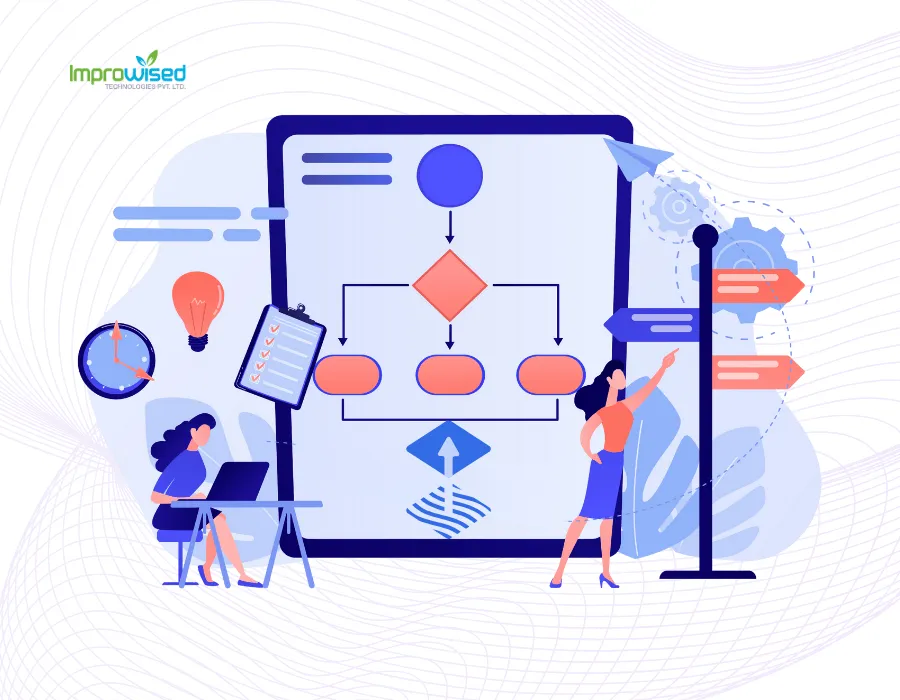May 14, 2025
Micro-Downtime Indexing: Tracking Sub-Second Failures Before Users Notice

By Rakshit Menpara
Improwised Technologies Pvt. Ltd.
Web services are expected to operate with high availability and minimal latency. While traditional monitoring systems effectively track outages and performance degradation, they often overlook micro-downtime—failures occurring at sub-second intervals that disrupt request handling or background processing without triggering full-blown alerts. These transient failures can degrade user experience, break downstream systems, or compromise the integrity of internal operations.
This post explores a methodical approach to detecting, indexing, and analyzing micro-downtime events in distributed systems. It outlines implementation strategies, instrumentation patterns, and the operational impact of ignoring these short-lived failures.

What Is Micro-Downtime ?
Micro-downtime refers to extremely short interruptions in service availability or correctness. These interruptions often occur in under a second—frequently within tens or hundreds of milliseconds. They may originate from momentary thread locks, temporary CPU saturation, ephemeral network spikes, garbage collection pauses, or synchronization bottlenecks.
These events are not classified as incidents by most monitoring platforms because they do not breach service-level thresholds configured for alerting. They often go undetected by synthetic probes or average-latency metrics. However, for latency-sensitive components, these brief disruptions introduce tail latency, increase p99/p999 delays, and silently degrade system behavior.
Sources of Sub-Second Failures
Sub-second interruptions can originate across several layers of the stack:
-
Application Layer: Connection pool exhaustion, request timeouts, or thread starvation.
-
Infrastructure Layer: Transient packet loss, NIC buffer overflow, or DNS resolution latency.
-
Platform Layer: Load balancer failover, short-lived CPU throttling, or memory pressure.
-
Dependency Chains: Retries cascading due to upstream delays, temporary database lock contention, or queue saturation.
Because these disruptions resolve quickly, traditional alerting systems (e.g., based on 1-minute windows or success-rate percentiles) fail to register them. Yet in high-throughput systems, a 200 ms stall occurring once every 10 seconds can impact hundreds or thousands of requests.
Why Traditional Monitoring Fails
Standard observability stacks collect metrics and logs at minute-level granularity. This sampling rate is insufficient for identifying high-frequency, low-duration anomalies. Consider the following limitations:
-
Averaging Loss: Averages hide spikes. If a service has a 10 ms average response time but experiences intermittent 500 ms delays, the average may remain unaffected.
-
Insufficient Granularity: Most monitoring dashboards visualize metrics in 1-minute intervals. A 400 ms downtime within a minute that handled 10,000 requests may affect 300 users but remain invisible.
-
Sampling Bias: Log-based tracing tools or APMs may sample 1% of requests. If micro-downtime occurs in the remaining 99%, it will not be captured.
-
Missing Event Correlation: Transient delays from a downstream service may not be linked back to their origin due to a lack of event correlation across system components.
Indexing Micro-Downtime: Instrumentation Strategy
1. High-Resolution Metrics
Use histograms or timers with sub-millisecond granularity (e.g., Prometheus histograms with customized buckets: [<10ms, <50ms, <100ms, <200ms, <500ms, <1s>]). p99, p999, and max latency values over short time windows (e.g., 5s) help surface these disruptions.
2. Event Logging with Millisecond Timestamps
Generate structured logs with high-resolution timestamps (at least millisecond accuracy). Log slow requests, retries, or thread stalls that exceed a configurable threshold, even if they don’t cause hard failures.
3. Per-Request Tracing
Implement distributed tracing with full-path latency breakdowns. Trace all requests (not a sample) over short rolling periods during load testing or peak usage. This ensures transient failures are captured in their full context.
4. Fine-Grained Alerting
Configure alert thresholds on tail latency (e.g., p99 > 300ms for >30 seconds) rather than aggregate failure rate or average latency. Use shorter windows (e.g., 30 seconds) to capture volatility.
5. Kernel-Level Probing
For latency at the OS and kernel level (e.g., CPU stalls, I/O wait spikes), use tools such as bcc, perf, or ebpf. These tools allow direct tracing of syscall latencies and context switch delays.
Indexing Patterns
To make micro-downtime actionable, raw events must be converted into searchable indexes. A micro-downtime index should contain the following dimensions:
-
Timestamp: High-resolution, typically in UTC.
-
Component ID: Service, pod, thread, or container identifier.
-
Request/Transaction ID: For traceability across the stack.
-
Duration: Time delay or service unavailability window.
-
Cause (if known): Retry, lock wait, network spike, etc.
-
Impact Estimate: Number of affected transactions
This structure supports anomaly detection, regression tracking, and targeted remediation.
Integrating with CI/CD Pipelines
Micro-downtime indexing can be integrated into CI/CD workflows to catch regressions before production rollout. Recommended practices include:
-
Latency Budgets as Quality Gates: Set pre-defined budgets for tail latency per endpoint. Block merges if thresholds are violated during synthetic testing.
-
Chaos Engineering with Temporal Constraints: Inject faults that cause sub-second degradations and verify detection tooling can identify them.
-
Performance Test Annotations: Annotate test runs with indexed downtime metrics and trace IDs. This ensures future regressions are easier to correlate.
Observing User-Perceived Failures
Users may not perceive sub-second delays as failures in isolation. However, when compounded with retries, client-side rendering delays, or animations, these effects become perceptible. Correlating backend micro-downtime with frontend telemetry (e.g., browser performance APIs or mobile SDKs) helps close the loop.
Example: A single 300 ms spike in an API response time may delay a page render by over 1 second due to script-blocking, resulting in layout instability.
By collecting Real User Monitoring (RUM) data and aligning it with backend micro-downtime indexes, teams can identify failure patterns invisible to synthetic tests.
Consequences of Ignoring Micro-Downtime
Micro-downtime, when untracked, introduces a range of operational and performance issues that accumulate over time. Thread or worker stalls caused by brief disruptions can lead to queue build-ups and downstream congestion, ultimately reducing system throughput. These stalls often trigger retries, which place repeated load on already unstable components. This amplifies errors and can escalate a transient delay into a cascading failure.
Even when not directly noticed by end-users, the accumulation of such delays contributes to elevated tail latency across dependency chains, especially on high-traffic services. This degradation compounds user-facing latency without breaching average latency thresholds. As a result, service-level agreements (SLAs) based on averages or broad time windows may appear within acceptable limits, masking underlying reliability issues.
Furthermore, the absence of visibility into these micro-events creates operational blind spots, delaying the detection of regressions, hardware faults, or memory inefficiencies. During incident response, the inability to correlate micro-failures with larger system failures obscures root causes and extends time to resolution. Over time, the compounded effect of these hidden disruptions undermines service quality, incident preparedness, and system efficiency.
For high-scale systems, ignoring micro-downtime leads to degraded reliability over time. It also inflates cloud infrastructure costs due to overprovisioning as teams attempt to mask these effects with more compute or redundancy.
Conclusion
Micro-downtime represents a class of failures that evade traditional observability. Detecting and indexing these short-lived interruptions requires high-resolution instrumentation, detailed event logging, and targeted alerting. While invisible in isolation, these events produce compounding effects that reduce service efficiency and complicate incident response.
Establishing a micro-downtime indexing strategy is essential for engineering teams seeking precise control over performance regressions and incident root cause resolution. By surfacing sub-second failures before they aggregate, organizations can maintain operational reliability and avoid blind spots in production systems.

December 12, 2025
Continuous Deployment with FluxCD: Architecture, Flow & Best Practices

By Shyam Kapdi
Improwised Technologies
Pvt. Ltd.

December 10, 2025
CI with GitHub Actions: End-to-End Pipeline Setup Guide

By Shyam Kapdi
Improwised Technologies
Pvt. Ltd.

December 5, 2025
Separating CI and CD: The Key to Faster, Safer Delivery

By Shyam Kapdi
Improwised Technologies
Pvt. Ltd.
Optimize Your Cloud. Cut Costs. Accelerate Performance.
Struggling with slow deployments and rising cloud costs?
Our tailored platform engineering solutions enhance efficiency, boost speed, and reduce expenses.
